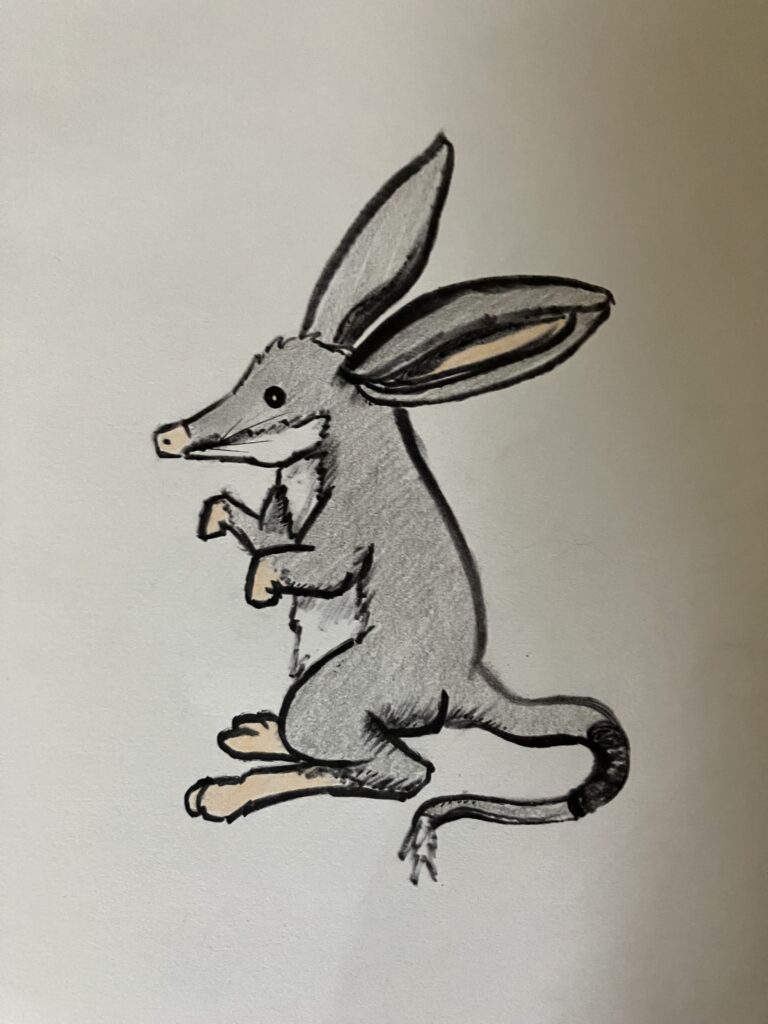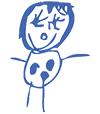EECERA Conference 2025 – Guest Blog #2: Learning with Joy
Posted 29th July 2025
One of a series of short blog posts by presenters who will be sharing their work at the upcoming annual conference in Bratislava, Slovakia. Any views expressed in this post are those of the author(s) and do not necessarily reflect the official stance of their affiliated institution or EECERA
Learning with Joy: Puppetry as an Art Form and a Medium for Amplifying Children’s Voices
Dr. Olivia Karaolis, Sydney School of Education and Social Work

“Joy is being grateful for everything you have.” — Archie*, age 4
This post shares one of the key findings from a broader research project (Karaolis & Little, 2024) that explored the presence and significance of joy in early childhood education. The mixed methods study employed a variety of data collection approaches—including surveys, observations, written reflections, visual art, photography, and puppetry—to better understand how both early childhood educators and the children in their care experience and perceive joy.
The research illuminated the joy found in everyday moments with young children. One educator captured this during a quiet morning of outdoor play, telling me: “There is so much joy; joy is everywhere … people just don’t see it.” Throughout the study, such moments reaffirmed joy at the heart of early childhood education. Unsurprisingly, the children themselves were consistently identified as the primary source of this joy.
I was privileged to witness and share in these joyful moments, particularly using my puppet, Joy, as an object to explore the people, places, and experiences that bring joy to children’s lives. Imagine sitting on the floor, surrounded by children, with a bilby puppet in hand, listening as they share how their families and friends make them feel happy. The joy bursts out of them in their words and bodies. It was beautiful witnessing the delight on a child’s face when they heard another child name them as someone who brings them joy. The use of puppetry not only sparked moments of genuine happiness but also served as an inclusive tool that supported all children—including those with disabilities—in expressing their feelings and experiences of joy. One child, Violet*, achieved this by joining in a group activity with Joy, something that the centre director told me she had not done before, as she typically preferred to play alone. Violet* accepted the invitation to touch Joy and said “night-night Joy” when we were finishing our group time and I gently placed Joy back in my basket to go to sleep.
On another occasion, when Joy and I joined Violet* at the art table, she showed Joy her glue stick as she carefully wound it up and down. She answered Joy’s questions about her artwork and the glue stick, but she did not answer any of mine. Seeing this child interact, touch, and speak with the puppet added to the educator’s experience of joy, building their understanding of her interests and capacities, and seeing her desire to connect.
Joy also removed the barriers to friendship experienced by another child, Luca*, whose exuberance and desire to touch everything and everyone impacted his play with other children. Joy was able to provide him with a sensory experience that he could share with others, satisfying his senses and enabling him to focus on interactions with other children, thereby sustaining his play. It was delightful to be with him, Joy, and three other children as they showed the puppet their favourite musical instruments, how to use them, and taught the puppet how to count. The centre director told me how Luca said he liked Joy because “she is fluffy like a cat” and he “likes touching and watching her talk”. He also said she is like “a big rat”. The other children said the following comments:
Chelsea: Joy was playing with me. We show her the musical instruments. I played the shaker. Joy said she likes it. I like her because she is so fluffy.
Sarah: I read a ballerina book to Joy. There was a princess in it. Joy, like the princess dress, and I gave her a pat
Luca: I like her she is soft and I pat her too.
Mackenize: We were showing her dresses, and the blue one is my favourite. Joy like the blue one like me.
As you can see, Luca was very much part of the discussion and shared joy.
Matt Smith’s (2024) work in applied puppetry offers important insights into the inclusive potential of puppets in early childhood settings. His work helped understand how puppets can elicit joy and support children’s social and emotional development by facilitating communication, promoting interaction, and strengthening interpersonal connections. Smith describes puppets as functioning simultaneously as “bridges” and “distancing figures,” drawing on Brecht’s Verfremdungseffekt to illustrate how puppets can create a psychologically safe distance. This distancing effect allows children—particularly those who may experience anxiety, communication challenges, or social barriers—to engage more freely in imaginative play. At the same time, puppets act as bridges, fostering shared experiences and collaborative engagement among peers, as demonstrated in the interactions between children such as Luca and Violet. Within inclusive education contexts, puppets can serve as accessible and responsive tools that support participation, relationship-building, and a sense of belonging for all learners. Our upcoming workshop will include many strategies to apply in your practice!
*Names of the children have been changed.
Little, C., & Karaolis, O. (2024). The lost art of joy in early childhood education. Australasian Journal of Early Childhood, 49(1), 81-90.
Smith, M. (2024). Applied Puppetry: The Theory and Practice of Object Ecologies, Methuen.
Dr Olivia Karaolis can be contacted at Olivia.Karaolis@sydney.edu.au and will present work referred to in this blog in Symposium Set E (26th August). (Schedule liable to change; please refer to final programme for details)
